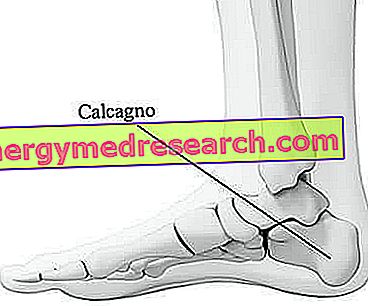Edited by Alessandro De Vettor
It has long been known that excessive physical activity is closely related to significant negative effects, sometimes with serious repercussions on the whole organism. On the other hand, multiple studies have shown that adequate physical exercise produces significant beneficial effects on various organs and systems, such as the cardio-vascular, musculoskeletal and gastro-intestinal systems.
The negative and positive effects that exercise induces on female reproductive function will be analyzed below.
Negative effects
The negative effects of physical exercise can be explained by inverse mechanisms that often merge and overlap each other. These mechanisms are represented by exercise-induced weight loss and / or metabolic stress that the exercise itself induces. These mechanisms occur clinically with the clinical picture of amenorrhea, ie with the absence of spontaneous menstruation for at least 3 months.

The amenorrhea of female athletes can be classified as "primitive amenorrhea", that is when the woman does not have the appearance of the menarche (first menstruation), and secondary, in the case in which the menstruation disappears after a more or less long period of spontaneous menstrual flows. "Amenorrhea due to exercise", together with amenorrhea due to eating disorders (such as bulimia and anorexia nervosa) is part of the functional hypothalamic amenorrhea. The latter must be differentiated from the hypothalamic amenorrhea due to organic causes, which include those secondary to tumor, ischemic or phlogistic pathology.
Those particularly at risk for amenorrhea from excessive physical exercise are above all those who practice sports such as swimming, fitness, classical dance, marathon (...). In these women the amenorrhea is due primarily to the reduction of body weight and absence almost total fat mass; these conditions are further aggravated by the reduction in caloric revenue by the subjects themselves.
Another important mechanism responsible for the athlete's amenorrhea is that of neuro-endocrine stress, with a consequent increase in the inhibitory tone on the hypothalamus by oxytocin, serotonin and melatonin, therefore with reduced GnRH secretion.
The hormonal picture of female athletes' amenorrhea, like those of functional hypothalamic amenorrhea in general, appears to be characterized by a subversion of the normal hypothalamic organization, which induces a deficit of function of the hypophysis-ovary axis. Excessive physical exercise, in fact, is understood by the body as a condition of stress, which influences the secretion of neuro-endocrine modulators with important alterations on the release of numerous factors, inducing hypogonadotropic hypogonadism.
In particular, there is a reduction in gonadotropin levels, an increase in prolactin, GH, ACTH, glucocorticoid and endorphin levels; there is also, and in particular, a state of profound hypoestrogenism, due to poor ovarian function, with important repercussions on bone metabolism. Free androgen levels increased due to estrogen deficiency and reduced SHBG levels. The levels of TSH, T3 and T4 have decreased. Furthermore, these subjects have low levels of leptin, a hormone produced by adipose tissue, which is reduced due to the reduction of fat mass. Lastly, the state of stress leads to the activation of the hypothalamic-pituitary-adrenal axis and consequent high levels of cortisol.
In women who have not had their menstrual cycle for at least 3 months, given the accurate medical history of the specialist, it will first be necessary to evaluate the levels of FSH and estradiol, to differentiate between hypogonadotropic and hypergonadotropic hypogonadism; in the case of amenorrhea of female athletes there will be a state of hypogonadotropism. To rule out a condition of hypothyroidism or hyperprolactinemia, it will be necessary to proceed with the evaluation of thyroid hormones and prolactin.
(attention: the scientific information given below is intended for informational and informative purposes only)
At this point in the diagnostic procedure it is essential to establish whether it is an amenorrhea related to hypothalamic or pituitary dysfunctions. For this purpose the GnRH test will be carried out, with single bolus or microinfusion. In the case of single bolus infusion, GnRH is infused intravenously at a dose of 100 ug, evaluating the response of the gonadotropins by blood samples taken 15 minutes apart for 2 hours. In normal subjects the LH levels will rise to the maximum values about 30 minutes from the start of the test; FSH levels will also be high, although less markedly than in LH. In the GnRH micro-infusion test, however, GnRH is administered at a dose of 0.2-0.4 ug / min for 3 hours intravenously, with evaluation of the gonadotropin response every 15 minutes. In the case in which there is no LH and FSH response to the test, hypogonadism will be due to a pituitary deficit, whereas in the case of female amenorrhea the response to the test will be normal, being hypothalamic pathogenesis. To identify whether the hypothalamic amenorrhea is functional, like that of excessive physical exercise, it will be necessary to exclude, through instrumental exams, possible central organic causes.
The last diagnostic step will be the naloxone test. Naloxone is a selective opioid peptide antagonist, and is administered intravenously as a single bolus dose of 2 mg, with determination of LH levels every 15 minutes for 2 hours. In women with hypothalamic amenorrhea the administration of naloxone will lead to an increase in the levels of LH, but not the characteristic peak that, instead, is found in normal subjects.
The therapeutic approach makes use first of all of the removal of the cause that led to the alteration; it is therefore necessary to advise women to reduce their physical activity, together with a recovery of body weight accompanied by a balanced diet. This approach allows, in most cases, the resolution of the problem.
Given the key role played in hypothalamic amenorrhea by endogenous opioids, it is advisable to administer naloxone orally, for 3-6 months at a dose of 50 mg / day; usually the results of this approach are good, especially in women who showed a positive naloxone test response during the diagnostic test.
For therapeutic purposes the pulsatile GnRH could be used, administered by means of infusion pumps; in reality this approach is reserved for women desiring pregnancy in order to cause the LH peak to induce ovulation.
The use of oral contraceptives, if on the one hand has the advantage of favoring the appearance of a menstrual-like bleeding in the patient with amenorrhea due to excessive physical exercise, on the other hand could lead the patient to erroneously believe that healing has taken place, distracting his already scant attention to his state of health.
Sedentariness, obesity and positive effects of physical exercise on reproductive function "



